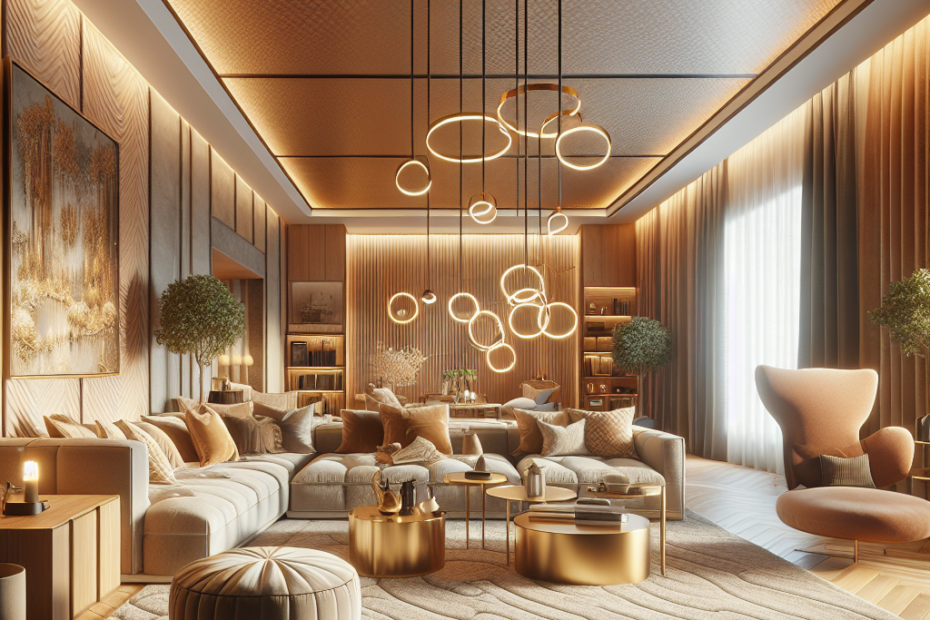The Impact of Texture in Interior Design
When designers talk about the aspects of interior design, they often mention texture. Texture in interior design can completely transform a room. It brings depth, warmth, and interest, creating a more vibrant and inviting space. In this blog post, they will explore the significant impact of texture in interior design and give readers helpful tips on how to use it effectively.
What Is Texture in Interior Design?
Texture refers to the surface quality of materials used in interior spaces. It affects how a room looks and feels. In interior design, texture can be visually perceived or physically felt. Visual texture is the appearance of a material that gives the impression of a specific touch sensation, such as a soft-looking fabric or a rough stone wall. Physical texture, on the other hand, refers to the actual sensation when someone touches a surface.
The Importance of Texture in Design
Using different textures can create a multi-sensory experience in a living space. Studies have shown that textures can influence people’s perceptions and moods. According to a report by the National Institutes of Health, textures can affect emotional responses, with rough textures leading to feelings of complexity and roughness, while smooth textures create a sense of calm and simplicity (NIH, 2016). Hence, designers use this knowledge to shape how people feel within a space.
Creating Visual Interest
Without texture, a room can look flat and uninspiring. Adding a variety of textures can create focal points and keep the eye engaged. For example, a soft velvet sofa against a rough brick wall can create a striking contrast that enhances visual interest.
Bringing Balance and Harmony
Textures can help balance a room by providing harmony between different design elements. A room with mostly hard surfaces might feel cold and uninviting. Introducing soft textures through rugs, cushions, or draperies can balance the harshness, making the room feel warmer and cozier.
Adding Depth and Dimension
Texture adds depth to a space by creating layers that give it dimension. Layering different textures, such as a knitted throw over a leather chair, adds richness to the design. This practice can make small rooms appear larger and more dynamic because of the interplay between the different textures.
| Texture Type | Effect | Example Materials |
|---|---|---|
| Rough | Complexity, Roughness | Brick, Stone, Unpolished Wood |
| Smooth | Simplicity, Calm | Glass, Polished Wood, Metal |
| Soft | Warmth, Comfort | Velvet, Plush Fabric, Wool |
Tips for Using Texture in Interior Design
- Mix Different Textures: Combining different textures, such as metal, wood, and fabrics, creates a layered and cohesive look.
- Use Texture to Highlight Features: Texture can draw attention to certain features of a room, like a textured wall behind a bed or a unique floor pattern.
- Consider the Room’s Function: In relaxing areas like bedrooms, opt for soft and smooth textures. For more active spaces like a kitchen, use durable and easier-to-clean textures.
- Balance with Color and Pattern: A well-balanced design considers texture, color, and pattern altogether. Integrate textured elements that complement the room’s color scheme and patterns.
Key Takeaways
- Texture in interior design significantly impacts the overall feel and visual interest of a space.
- Different textures can evoke different emotions and help create a balanced and harmonious design.
- Using a variety of textures adds depth and dimension, making spaces feel more dynamic.
- Designers should mix textures, highlight features, and consider the room’s function to use texture effectively.
FAQ
1. What is texture in interior design?
Texture in interior design refers to the surface quality of materials used in a space, affecting how it looks and feels. It can be either visual texture or physical texture.
2. Why is texture important in interior design?
Texture adds depth, interest, and warmth to a room, influencing people’s moods and perceptions, creating a balanced and harmonious design.
3. How can I add texture to my living room?
You can add texture through various materials such as cushions, rugs, curtains, wall finishes, and furniture fabrics. Mixing different textures creates a layered and engaging space.
4. What are some common textures used in interior design?
Common textures include rough (brick, stone), smooth (glass, polished wood), and soft (velvet, wool). Each brings a different feel to a room.
5. How do I balance texture with color and pattern?
Balance texture with color and pattern by choosing textured elements that complement the room’s overall color scheme and patterns, enhancing the room’s design cohesively.
Source: National Institutes of Health (NIH), 2016
